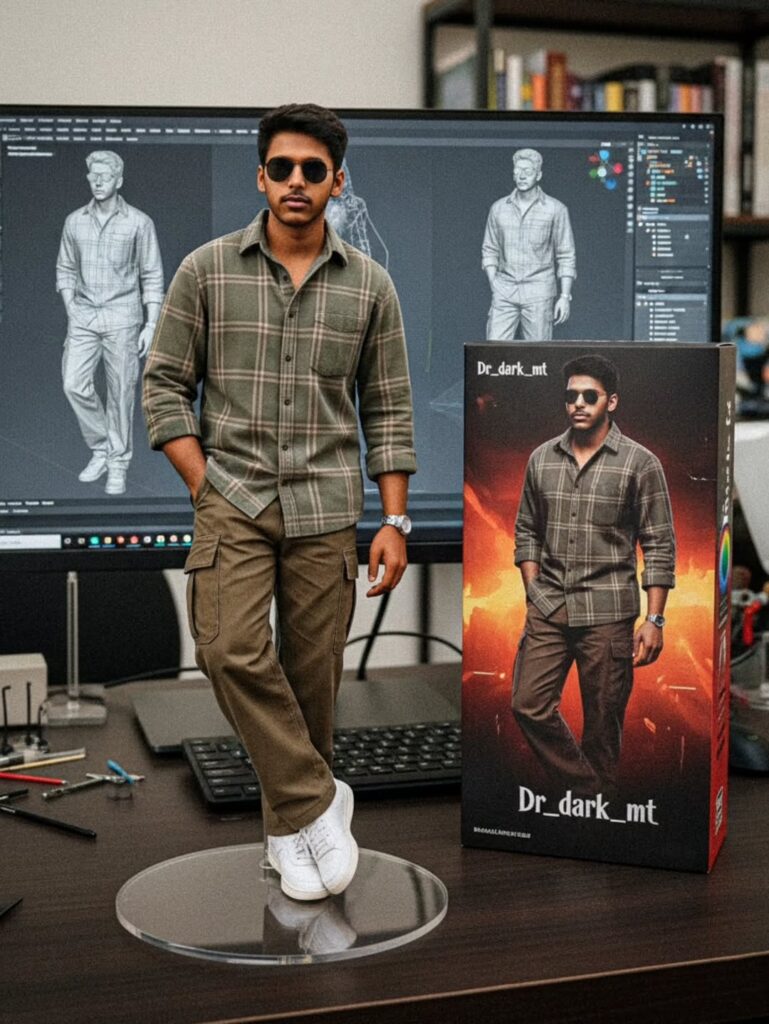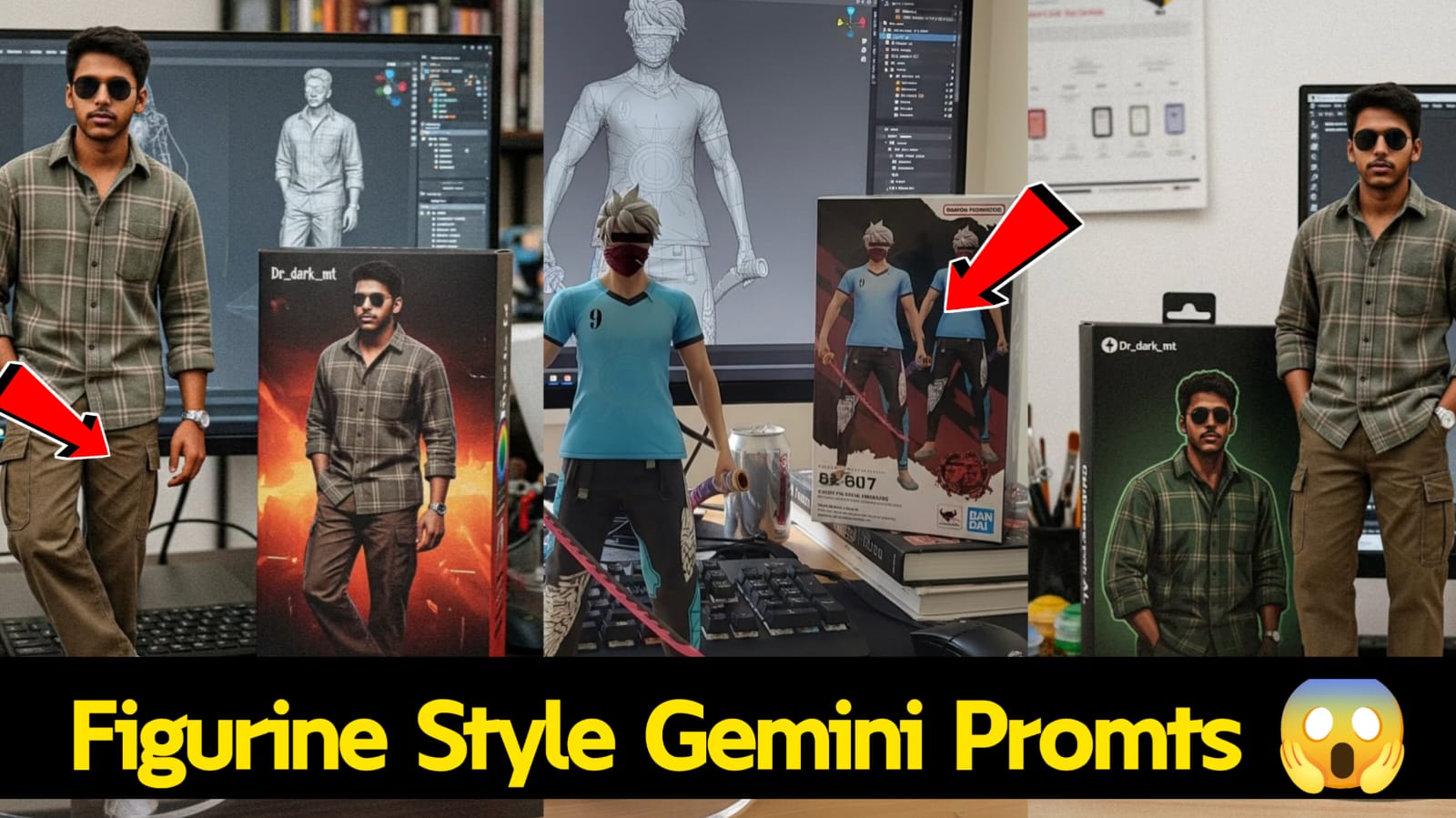🍌 What Is “Nano Banana”?
In August 2025, Google quietly rolled out a major update to its Gemini app—specifically, the Gemini 2.5 Flash Image model, a high-speed image generation tool optimized for mobile and real-time editing. Internally, this version was code-named “Nano Banana”, and the name stuck thanks to a cheeky tease from Google employees (and even CEO Sundar Pichai himself) using banana emojis to hint at the launch.
The model quickly gained a cult following. Why? Because it delivers ultra-fast, detailed, and consistent image generation—a huge leap from previous AI art tools.
🧠 What Are “Banana Prompts”?
“Banana prompts” is a term users have coined for the kind of natural-language commands that work particularly well with Gemini’s new image model.
Unlike traditional prompt styles that rely on keyword stacking (e.g., “fantasy style, HDR, sunset, woman, armor”), banana prompts are more like full sentences or scene descriptions:
“Turn this image into a toy-sized figurine standing on a desk with a sunset in the background and glowing soft light.”
The AI responds incredibly well to these descriptive, flowing inputs—often delivering accurate and artistic results in seconds.
🧸 The Figurine-Style Craze
One of the most viral trends fueled by Nano Banana is figurine-style image generation—turning people, pets, or characters into miniature collectible-style figures, often posed on furniture, desks, or diorama-style backgrounds.
It’s not just a gimmick. The results are shockingly consistent and photorealistic:
- A dog becomes a tiny space-suited explorer on a Mars rover.
- A selfie is transformed into a vinyl toy, complete with packaging.
- A child’s drawing is turned into a figurine lineup for a pretend “toy commercial.”
This trend exploded on platforms like Reddit, X, and TikTok, with users coining tags like #BananaPromptChallenge and #MiniMeGemini to share their creations.
⚡ Key Features of Nano Banana
So what makes this model so powerful? Here are some standout capabilities:
1. Speed and Quality
- Image generation happens in under 3 seconds.
- Outputs are clean, detailed, and free from typical AI image glitches (like extra fingers or warped faces).
2. Consistent Character Identity
- The AI remembers facial features, clothing, and poses across edits—ideal for keeping a subject recognizable in different styles.
3. Complex Prompt Handling
- You can chain commands naturally: “Make her a figurine, put her on a wood desk, golden lighting, blur the background slightly.”
4. Text Handling
- Gemini handles text-in-image prompts better than most AI rivals, meaning you can add realistic labels, posters, or logos inside the image.
🎨 Real-World Use Cases
While the figurine trend is fun, Nano Banana has broader implications:
- Marketing: Brands are using banana prompts to generate stylized product mockups and ad visuals.
- E-commerce: Etsy creators and indie sellers are crafting their own product visuals using stylized AI.
- Education: Teachers are making storytelling visuals, toy concepts, or character art with ease.
- Comics & Animation: Artists use Gemini to quickly iterate character ideas in specific visual formats (chibi, toy-style, 3D render, etc.)
And because it works both from scratch and with uploaded images, it’s equally great for casual creators and professionals.
📱 How To Try It Yourself
You can access Nano Banana via the Gemini app or through Google’s AI Studio at ai.google.dev.
You can also use third-party tools like Promptus, which integrates Gemini’s API and gives you even more editing flexibility.

Promts –
Using the nano-banana model, create a 1/7 scale commercialized figurine of the characters in the picture, in a realistic style, in a real environment. The figurine is placed on a computer desk.
The figurine has a round transparent acrylic base, with no text on the base. The content on the computer screen is the Zbrush modeling process of this figurine. Next to the computer screen is a BANDAl-style toy packaging box printed with the original artwork., The packaging features two-dimensional flat illustrations.
Please turn this photo into afigure. Behind it, there should be a Model packaging box with the character from this photo printed on it. In front of thebox.on a round plastic baseplace the fiqure version of thephoto I gave you. I’d like the PVC material to be clearlyrepresented. It would be even better if the background is indoors.
Pro Tips:
- Use detailed, story-like prompts for better results.
- Try referencing lighting, materials, or camera types: “Make it look like a figurine photographed on a DSLR with soft ambient light.”
- Iterate in steps: Start with a base idea and refine it through conversation.
🤖 Banana Prompts vs. Other AIs
Gemini’s image generation stands out for its speed, realism, and character consistency. In side-by-side comparisons, reviewers have said that:
- Gemini outpaces DALL·E in edit speed.
- It outperforms Midjourney in character retention.
- It beats Grok’s image model in prompt accuracy and realism.
In short, banana prompts aren’t just a trend—they’re the new standard for intuitive, conversational image creation.
🥇 Final Thoughts
Google Gemini’s “Nano Banana” image model isn’t just a flashy update—it’s a genuine shift in how we interact with AI art tools. With fast generation, lifelike results, and the ability to creatively control outputs through natural language, it’s opening doors for a new kind of visual storytelling.
Whether you’re a marketer, artist, hobbyist, or just curious, there’s never been a better time to try AI image creation. Grab a photo, think of a scene, and start crafting your next miniature masterpiece with a banana prompt.
